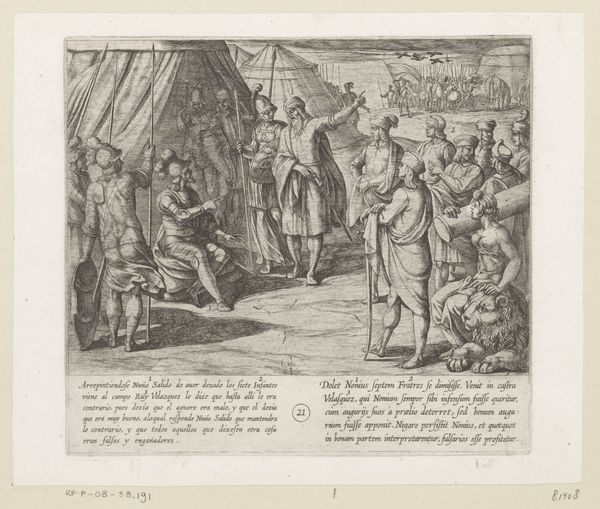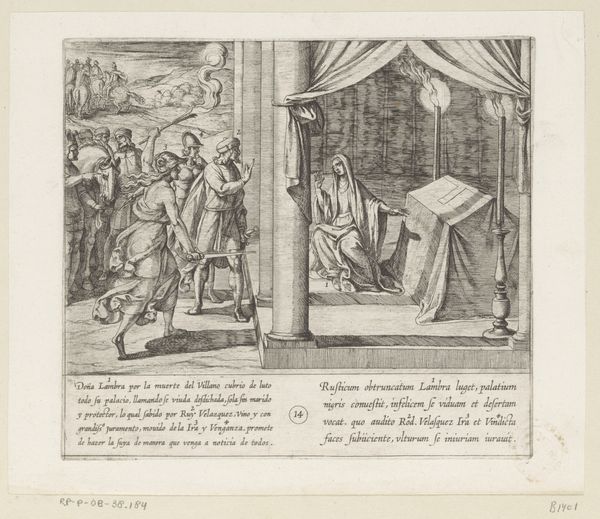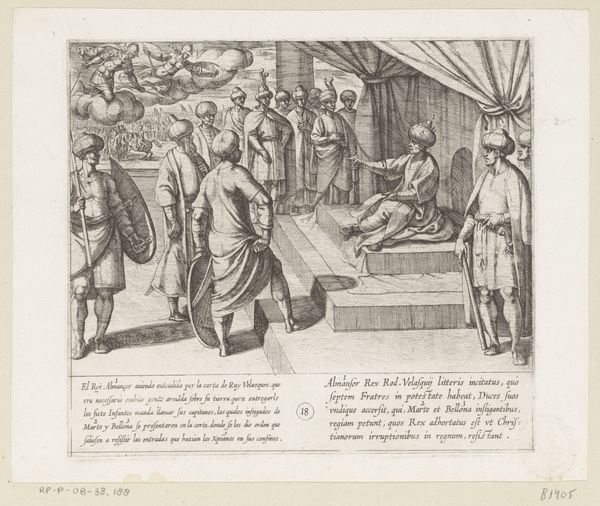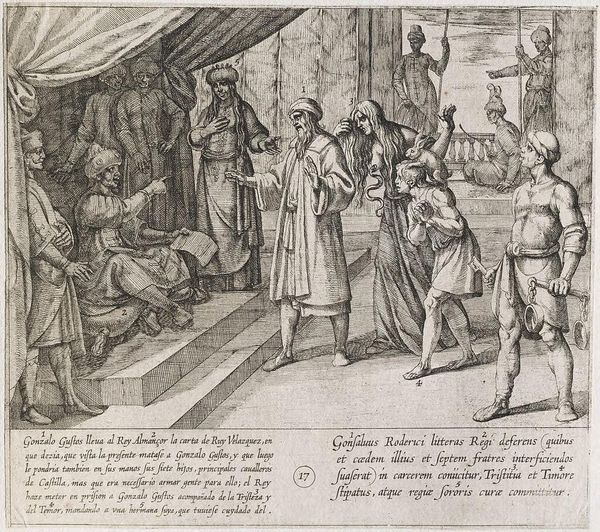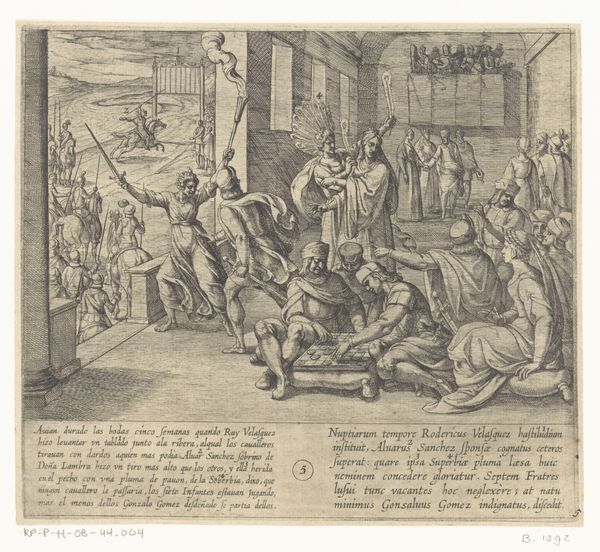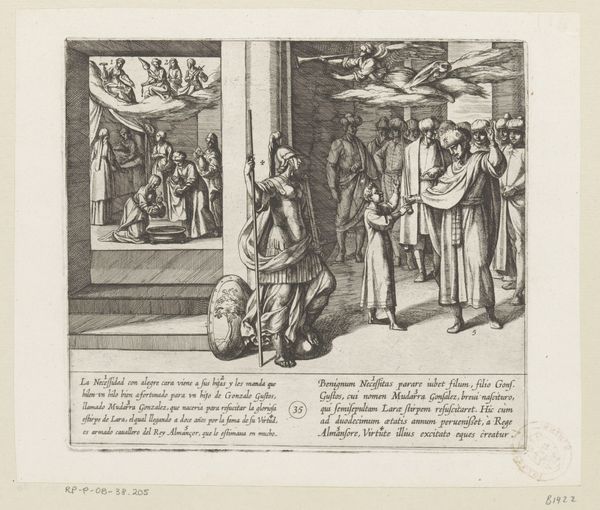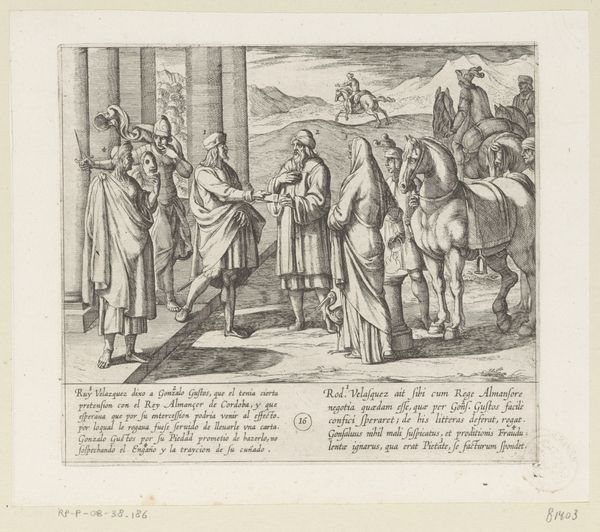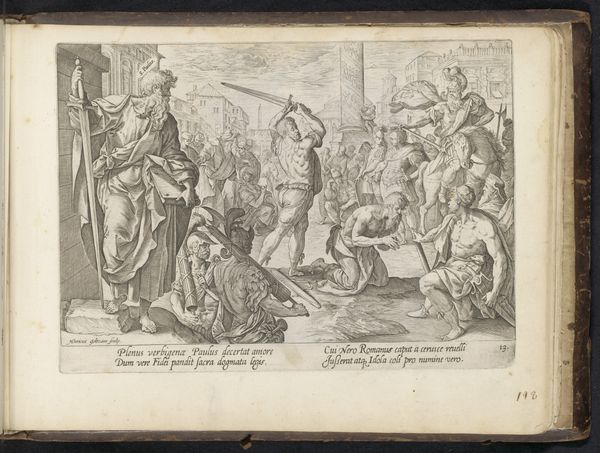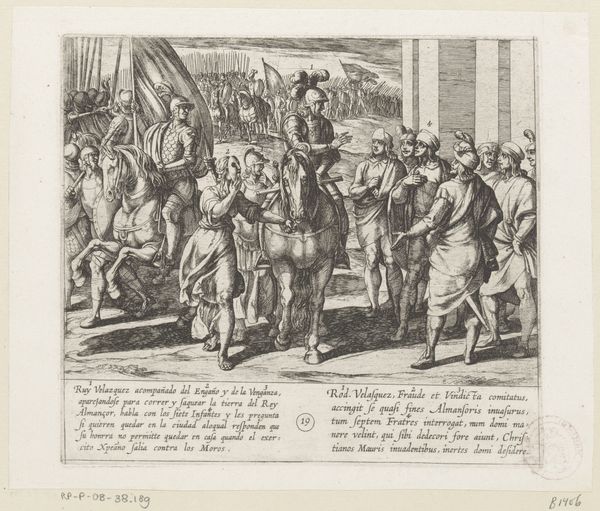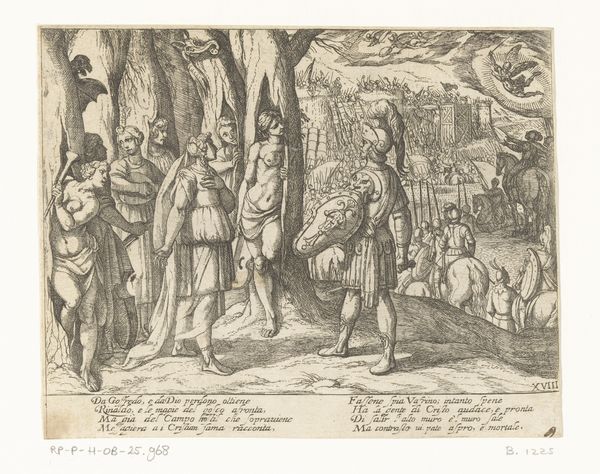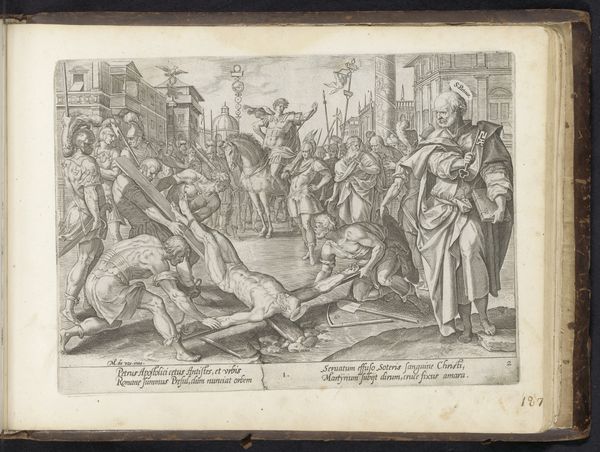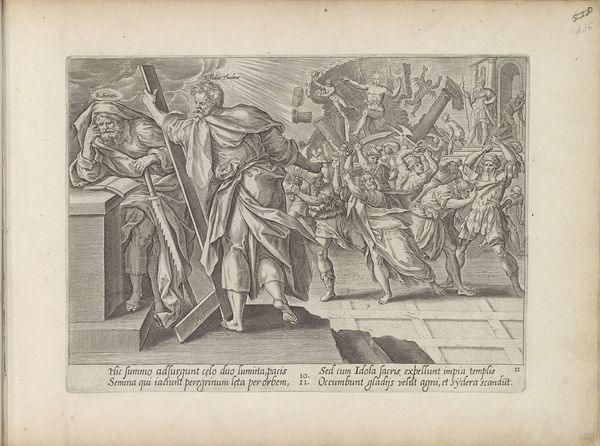
De Moorse koning leest de brief die de moord op Gonzalo Gustos en de gevangenneming van de zonen van Lara beveelt 1612
0:00
0:00
print, engraving
#
narrative-art
#
baroque
# print
#
old engraving style
#
figuration
#
line
#
history-painting
#
engraving
Dimensions: height 185 mm, width 206 mm
Copyright: Rijks Museum: Open Domain
Editor: This is Antonio Tempesta's "De Moorse koning leest de brief die de moord op Gonzalo Gustos en de gevangenneming van de zonen van Lara beveelt," created in 1612. It's an engraving. I’m immediately struck by the composition; it feels very busy, packed with figures and detail. How do you interpret the formal arrangement of this print? Curator: Focusing on the structure, note the strong diagonal created by the steps leading up to the king. This immediately draws our eye. The artist has employed linear perspective, though somewhat inconsistently, to create a sense of depth. How does the density of the linework contribute to your experience of the piece? Editor: I guess all those lines make the print feel very active, and also create areas of dark and light that give some figures more weight. Curator: Precisely. Notice the contrast between the densely hatched areas that define form and the relatively blank spaces that create highlights. It directs our attention. Furthermore, consider the role of line itself. Here, line does not merely describe but constitutes the very fabric of the image. How does the use of line affect the legibility of the narrative? Editor: Well, it is kind of hard to make out what is happening. I get the sense of drama, but not the specifics. Is that intentional, do you think? Curator: Perhaps not intentionally obfuscating, but the priority seems to be a dynamic surface achieved through skillful manipulation of line and tonal contrasts. We can certainly appreciate the dramatic composition created by these intrinsic qualities, even if we struggle to decode the specific narrative elements. Editor: I never thought about it that way. Thanks! Now I’m going to look at engravings in a different light, no pun intended. Curator: Indeed. The power of formal analysis resides in its capacity to reveal the artistry inherent in the choices of line, form, and composition.
Comments
No comments
Be the first to comment and join the conversation on the ultimate creative platform.
